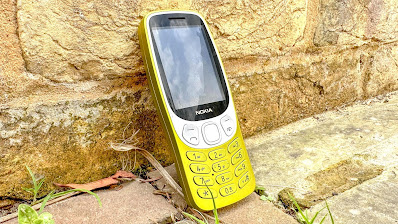Nokia 3210 is Back dominated the mobile handset market for mobiles in the late 1990s, and models like the Nokia 3210 became cultural touchstones. Fast forward to the present, and there’s a resurgence of interest in those “dumbphones” as people try to escape the constant connectedness of today’s smartphones. The return of the Nokia 3210 forces us all to reflect on our modern technology world and how some of us want to live in the past with technology simplicity.
A Look Back in Time
In 1999, the Nokia 3210 was loved because its software was very user-friendly, it brought back treasured memories with the game Snake, and the device was easy to dismantle because of its modular design. Now, efforts are being made to curb the use of the productivity-enhancing tools smart devices have integrated, which explains the surge in popularity in such devices.
The Movement of Digital Detox
Despite being very useful, modern smartphones have really sophisticated features that most people believe make them addictive, contributing to worries over its impact on mental health. The digital detox movement is marked by a lifestyle change aimed at reducing the use of screens and focusing on inner peace. An example on the opposite end of the spectrum can be seen by those who use an old basic cell phone or seek out basic phones providing no internet access. In the name of attention-deficit caused by social media and the all-too-available online content, the movement seeks to curtail devices aimed at constant engagement. The lifestyle change that shift encourages is well matched with Nokia 3210 as the phone packs all the features one may need, devoid of modern-day life distractions.
Read More: Nokia 5.3 Affected By Android 12 Update changed information about the problem online
Reliving The Experience of 3210 Today
Using a Nokia 3210 in today’s time is liberating yet difficult at the same time. Users are grateful for the lengthy battery life and sturdy construction. At the same time hardships brought on by the absence of mobile text features, navigation, and telephonic payments are difficult. A Guardian article expresses such complications with modern simplicity stating that modern duties become complicated in the lack of conveniences that exist in current prosaic life.
Impact on Society
It is impossible to deny Nokia’s effect on society and culture. The company reached its peak when its market share globally was 40%, while in the said country it reached 70%. Its name became a trademark for mobile phones. Especially the ringtones of the brand, along with its designs, are used to influence the pop culture. Due to this legacy, Nokia has opened its design archives to showcase its history and achievements in telecommunication devices of mobile technology.
Why Are Dumb Phones Considered A Lot More Effective
While the simplicity and nostalgia that came with the Nokia 3210 are very appealing, practicality is a different story. Access to emails, messages, and even real time tracking can be helpful for people who are constantly pressed for time. On the other hand, if someone’s goal is to minimize distractions and focus on important factors only, then the 3210 serves as a perfect option.
Conclusion
The current guilty-pleasure nostalgia-fest of reviving the Nokia 3210 is indicative of a wider momentum towards reconciling our dependency on tech with our hope for a world uncluttered by it. It’s a throwback to when mobile phones were about connection instead of constant consumption. It may never be a substitute for smartphones, but for the time being, smartphones are providing users access to buzz-heavy entertainment. Devices like this, that remove you from the smartphone or allow you to escape, can also help you reconnect with your surroundings.
